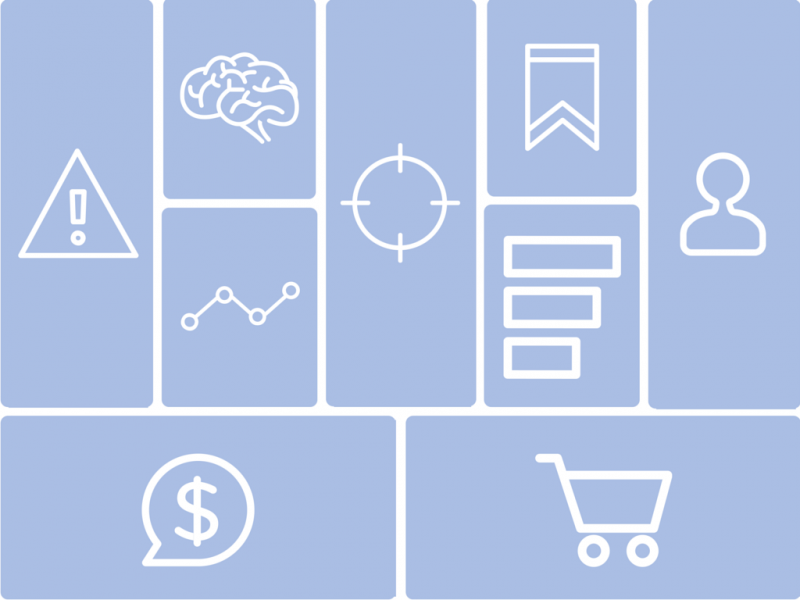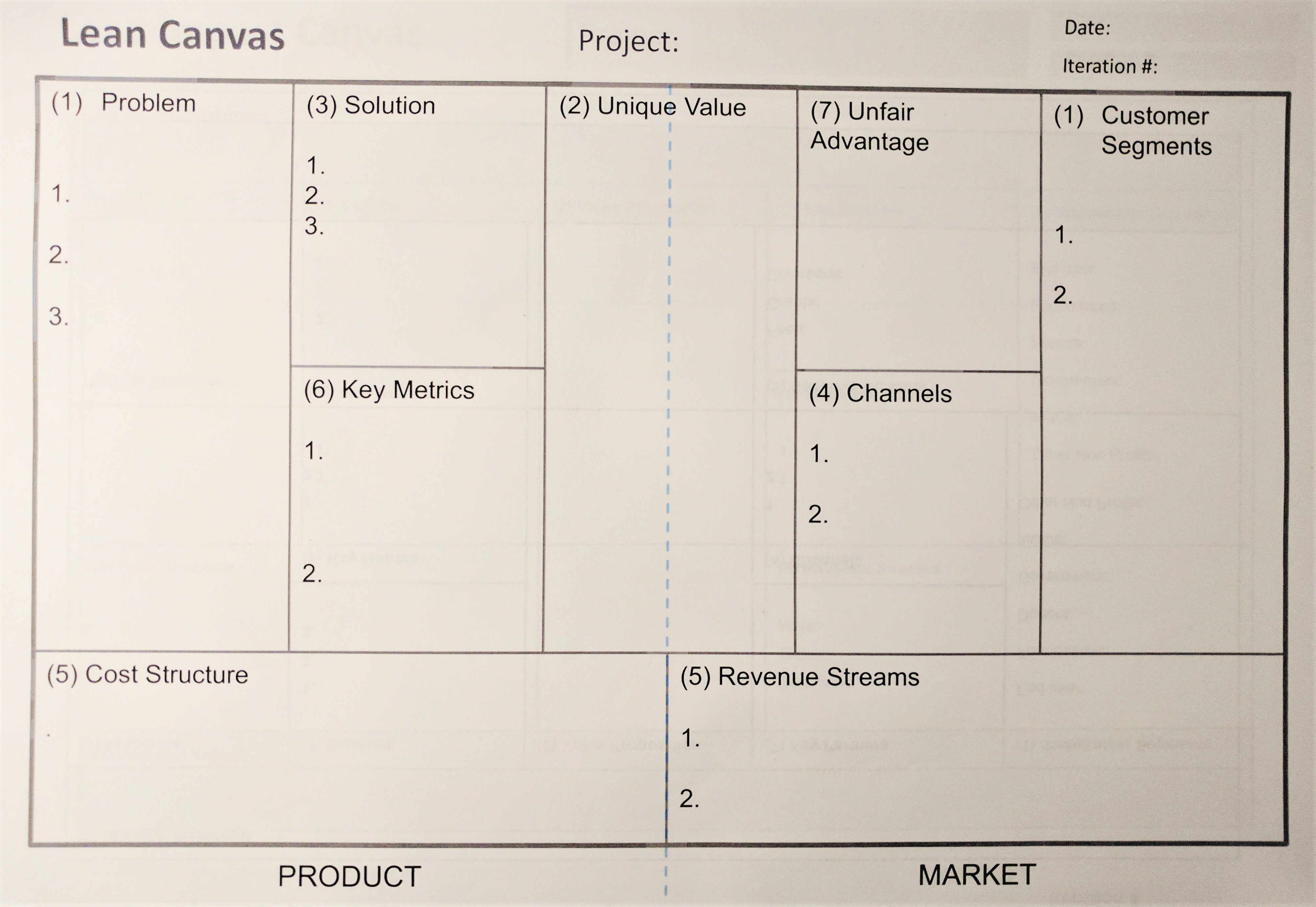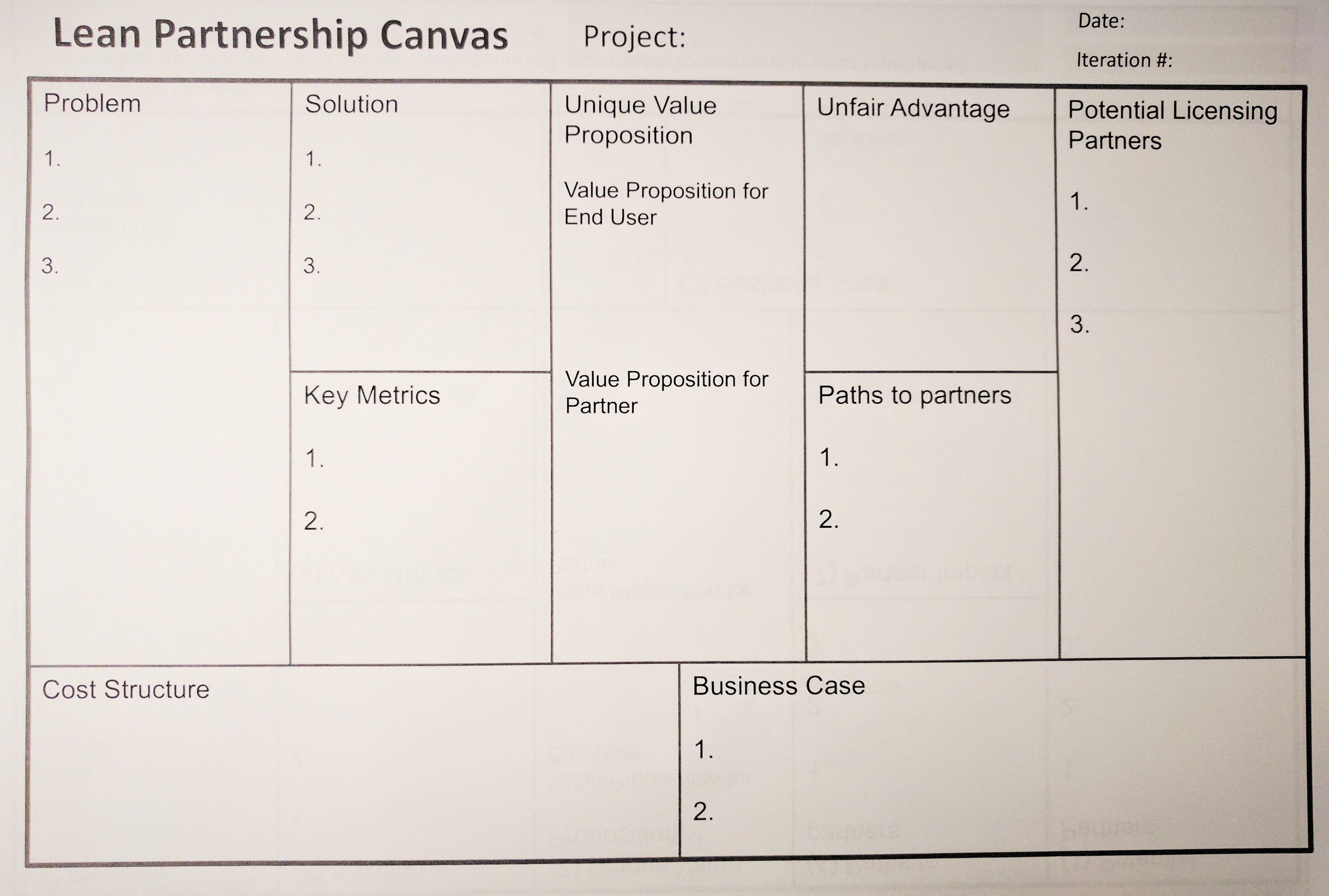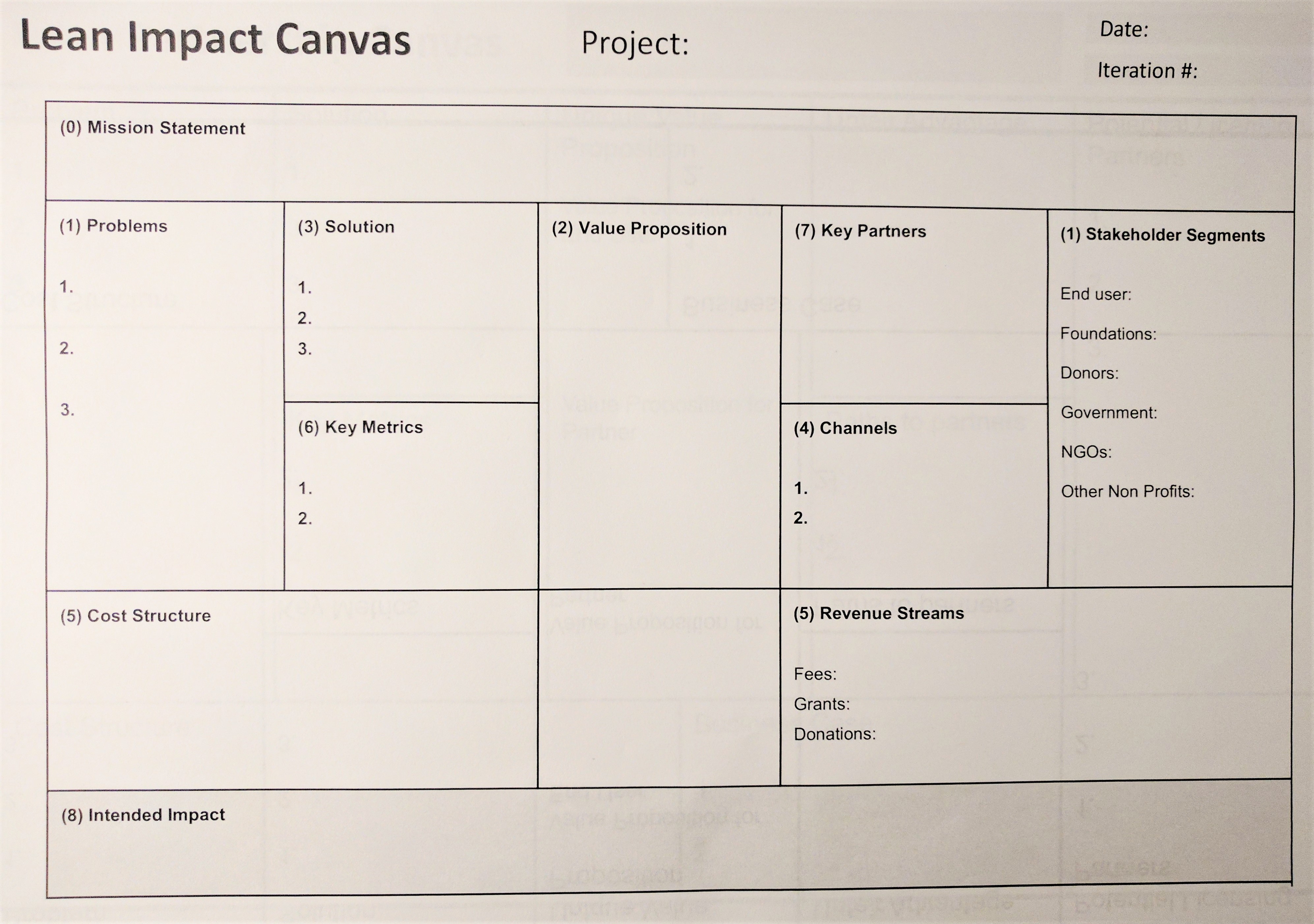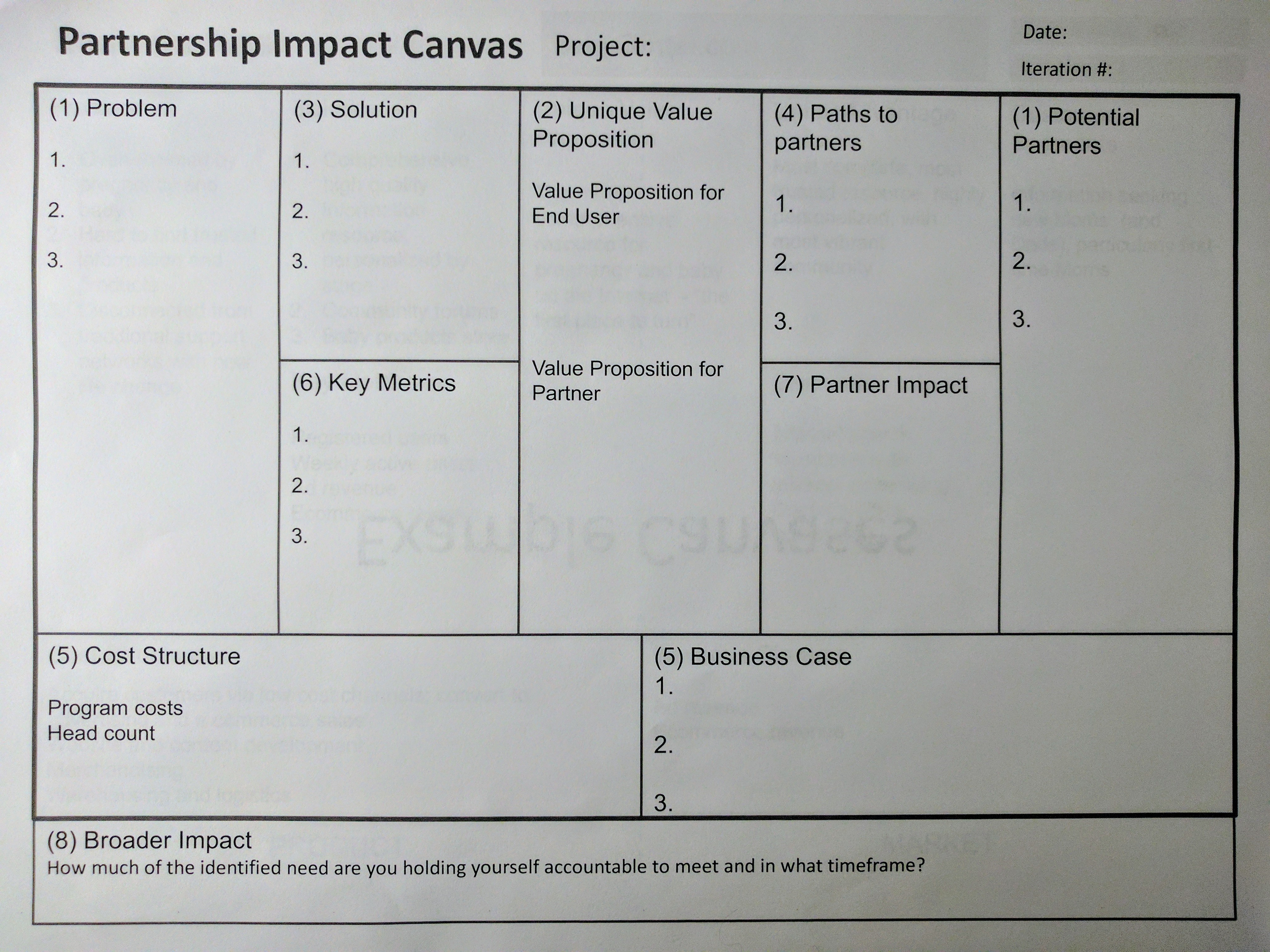I’m using my time as an exchange scholar at Stanford to take a number of short pop-up classes at the d.school; I’m hoping they will provide some useful tools for both incorporating into current Building Bridges programmes and for thinking about where we are heading next. One of these is From Prototype to Fruition – it’s a three-week taster taught by Stefanos Zenios and Matthew Glickman, drawing from the two-quarter GSB course Start-up Garage, and it’s offered within the d.school to encourage a quick-and-dirty, iterative approach to developing business models.
There are a number of (very different) potential paths to fruition – for example, B2B, B2C, for-profit partnerships, impact partnerships, impact ventures, and public benefit ventures. This is useful to think about, because my own conception of Building Bridges is evolving. It started out as a volunteer initiative serving youth on the margins, and up until quite recently I would have said that I would like to see it established as a non-profit. That being said, I’m not sure if I want it to be dependent on grants and foundations, largely because I’m realizing how much I would like to be able to pay my team in recognition of their skill as artists and teachers. I’m not attached to any particular path, though, and it is certainly a useful exercise to think about how I would structure the venture differently if I wanted to make a profit, or if I valued one of our offerings over another.
(It’s perhaps important to note that this class is taking place in California, where the possibilities for balancing profit, people, and purpose are becoming more nuanced, but that I would most likely register BB in Sri Lanka, where options are far more limited. That being said, it can be useful to operate in a not-yet-existing sphere to imagine exciting possibilities.)
It can quickly become overwhelming to consider all the possible directions a venture can take. Stefanos and Matt shared a fourfold tool for getting our ideas on paper quickly and legibly: the lean canvas and its variations (the lean impact canvas, lean partnership canvas, and lean impact partnership canvas). This might be because I’m a historian and I like to know where ideas come from and how they mutate, but I wish we’d spent a bit of time discussing how all these tools came to exist and their relationship to the rest of the toolbox out there. Admittedly, it is possible to find answers to these questions via google, but still!
The lean canvas was adapted from Alexander Osterwalder’s business model canvas (BMC) by Ash Maurya to fit better with lean startup principles: the Key Partners box is replaced with the Problem box, Key Activities with Solution, Customer Relationships with Unfair Advantage, and Key Resources with Key Metrics. Maurya has also written a really interesting blog post on what he changed and why.
The lean partnership canvas is almost identical to the lean canvas, although Customer Segments becomes Licensing Partners, and Channels becomes Paths to Partners.
The lean impact canvas includes lines for Mission Statement/Intended Impact, and swaps out Unfair Advantage for Key Partners, which makes it more like the original BMC – and makes me wonder why Unfair Advantage is deemed unnecessary. In filling out a draft canvas for class, it seemed that there was a lot of overlap between Stakeholder Segments and Key Partners. (Also, what makes the lean impact canvas different from the social lean canvas, which keeps the Unfair Advantage intact?)
The lean impact partnership canvas has the same structure as the lean partnership canvas, and, like the lean impact canvas, includes lines for Mission Statement/Intended Impact and swaps out Unfair Advantage for Partner Impact. I do wonder what the difference is between Intended Impact and Partner Impact. I also wish we’d briefly discussed or alluded to the theory of change and logic model referenced in the Impact section of the lean impact canvas.
If I sound really critical, that’s because being a critic is my day job. I’m actually really looking forward to testing out these four canvases and producing some models for testing next week! Also, apologies for the poor photo quality – I’ll attach better-quality soft copies soon.
*
I’m familiar with some of these ideas already, because as part of Leading Change, the course for Queen’s Young Leaders, we discussed the Business Model Canvas (handy guides available here and here) with our tutor Simon Boot – and I worked through a first draft of the canvas in a small group during residential week. Later, he also alerted me to the Social Business Model Canvas, which is possibly better suited for ventures like Building Bridges.
Also, if you’re curious, Acumen+ is currently offering two courses through NovoEd that seem to cover some of the same material: Lean Startup Principles for Social Impact, and Business Models for Social Enterprise.
Featured image via ProductHub
